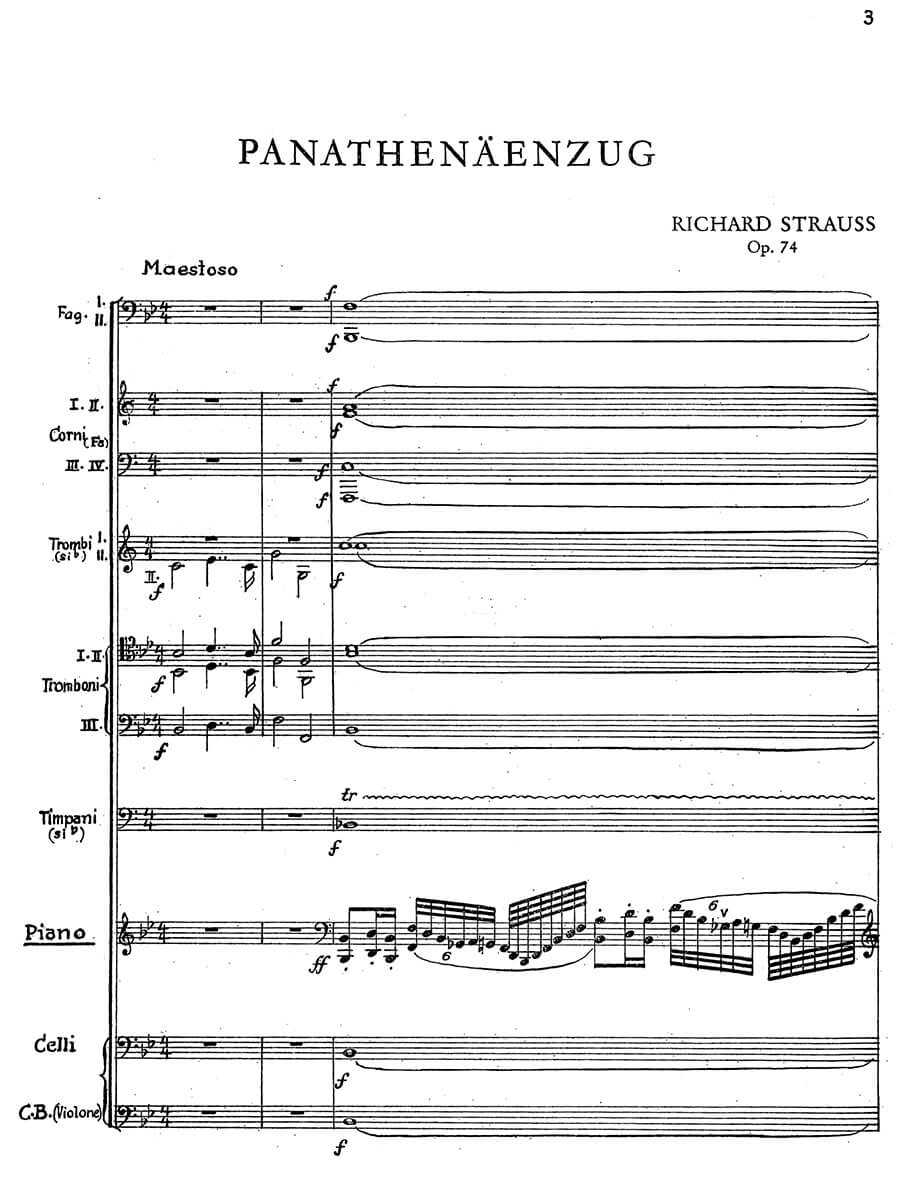Panathenäenzug Op. 74, symphonic studies in the form of a Passacaglia for piano (left hand) and orchestra
Strauss, Richard
39,00 €
Richard Strauss – Panathenäenzug Op. 74 (Panathenaic Parade, 1926-27)
(b. Munich, 11 June 1864 – d. Garmisch-Partenkirchen, 8 September 1949)
Symphonic Studies in the form of a Passacaglia for Piano (left hand) and Orchestra
Preface
The Viennese pianist Paul Wittgenstein (1887-1961) was seriously wounded in World War I and lost his right arm. Since he was extremely strong-willed and talented, as well as inherently very wealthy, it is thanks to him and the lucrative composition commissions he initiated from international musical celebrities that we now have such a rich literature of masterpieces for piano left hand, among them masterly concert works with orchestra by Maurice Ravel, Sergey Prokofiev, Paul Hindemith, Benjamin Britten, Alexandre Tansman, Franz Schmidt, Karl Weigl, Erich Wolfgang Korngold, Sergei Bortkiewicz, Josef Labor or Richard Strauss, chamber music works by Franz Schmidt, Hans Gál, Korngold and others, and many piano solo works.
Richard Strauss and Paul Wittgenstein had already been friends before World War I, since the time when they had played piano four-handed in the house of Paul‘s father, the Factory owner and music patron Karl Wittgenstein. It was therefore no wonder that Strauss wrote his ‚Parergon to the Symphonia Domestica‘ for Wittgenstein in 1924-25, which was premiered in Dresden on October 6, 1925, by the dedicatee with the Berlin Philharmonic under Fritz Busch. This one-movement occasional work was initially quite successful, but Wittgenstein was not satisfied with either the pianistic brilliance or the orchestration, which was too heavy for him compared to the solo part. To Wittgenstein‘s joyful surprise, Strauss announced a new work for piano left hand and orchestra in early March 1926: The ’Panathenäenzug’ then took shape in the course of the year and was completed on February 14, 1927. (On November 15, 1926, Strauss had reported on the work in a letter to Clemens Krauss). The Passacaglia bass theme is performed in 22 variations. Formally, the work corresponds to Liszt‘s ideal of ‚several movements in one single movement‘ and is thus related to the symphonic poems that Strauss had so successfully presented to the world already as a young man. …
Read complete English or German preface > HERE
| Score No. | 4402 |
|---|---|
| Edition | Repertoire Explorer |
| Genre | Orchestra |
| Size | |
| Printing | Reprint |
| Pages | 172 |
